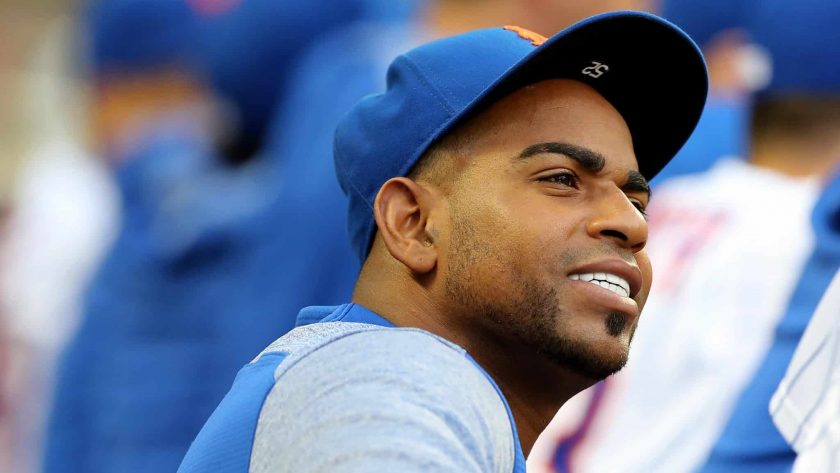The universal DH will not solve all of the New York Mets’ problems

The universal designated hitter will not be what ultimately solves all of the problems surrounding the New York Mets.
The designated hitter is coming to the National League. It’s an unwelcoming development, but at this point, it seems almost inevitable, so there’s no sense complaining. If the DH can bring baseball back this season, I just became the biggest DH fan there is.
A consensus seemed to form soon after the announcement though. The New York Mets were uniquely poised to take advantage of the rule change. For instance:
- On SNY’s MetsBlog, Gary Cohen says, “As much as it pains me to see any encroachment of the DH into the National League, the current truth for the Mets is that they are uniquely poised to take advantage, should this become a reality this season.”
- Jeff Todd of MLBTradeRumors writes, “Some teams could really benefit from the anticipated temporary rule change…among them, the Mets.”
- Jim Bowden of The Athletic writes, “A full-time DH rule would put the Mets in solid shape.”
Sure, the universal DH solves one problem for the Mets. But that’s the thing: it solves just a singular issue. The Mets have multiple. And while they might be the proverbial “good problems to have,” the universal DH can only do so much — and it can’t do as much as the Mets need.
The most obvious candidate to be New York’s full-time DH is Yoenis Cespedes. This doesn’t require much explanation. When healthy, Cespedes is a monster on offense, but injuries have additionally sidelined him for nearly two years. There’s no telling what his defense will look like when he finally returns to the field. Even if he can perform as a good defender, the Mets may still try to keep him healthy by using him as their DH and not pushing for his return to the outfield.
Great. Problem solved. Cespedes is back in the lineup. But now, there are other problems.
What does the outfield look like? Does J.D. Davis play left, even though he’s really not a good defensive outfielder? Or Dom Smith, even though his defense isn’t stellar either?
The Mets could solve these problems by using Smith or Davis at DH. But then, different issues arise. Can Cespedes really play the outfield? Can Robinson Cano undergo a bounce-back year? If either Smith or Davis plays DH, does the other take a seat on the bench?
Cano could DH, but what if he can’t hit anymore? He’s 37, which isn’t the best age for a career resurgence. If Cano is the DH, maybe Luis Guillorme plays second and Jeff McNeil plays third. Then, either Davis or Smith can play left field. Unless Cespedes is healthy, in which case, once again, they’ll both be on the bench.
Or McNeil plays second, Davis plays third, and Smith plays left…but then Cespedes is still an unsolved problem, Guillorme doesn’t earn regular playing time, and Cano’s aging bat still sits in the middle of the lineup.
The Mets’ problem is pretty simple. They employ five players whose positions are fairly locked down in Wilson Ramos, Pete Alonso, Amed Rosario, Michael Conforto, and Brandon Nimmo. Three positions are open: second base, third base, and left field. McNeil obviously needs to play every day, so he’ll see time at one of those.
That leaves two field positions and the DH spot open. To fill them, the Mets have:
- J.D. Davis, an offensive standout who, thus far, is not a good defender at any position.
- Robinson Cano, who’s 37 and was below average on offense and defense last year. Nonetheless, he makes so much money that he probably won’t just sit on the bench.
- Dom Smith, who doesn’t have a natural position besides first base but showed much offensive promise last year that he deserves at least a chance to play every day.
- Yoenis Cespedes, who’s obviously an incredibly talented player, but whose capabilities — on both offense and defense — are completely unknown at this point.
- Luis Guillorme, who’s a spectacular defender and a player who was intriguing on offense last year. Although, he probably isn’t established enough to beat out the rest of this list.
Again, this isn’t some sort of calamity for the Mets. They possess a number of options, and manager Luis Rojas could probably assemble 20 different lineup combinations capable of winning games. Who plays DH is not so much a terrible problem as it is a very difficult question with several not-so-bad answers.
What the universal DH is not, though, is some sort of savior. Yes, it’ll be helpful, as it will be for most National League teams. But it’s limited in how many problems it can solve. Adding the DH this season will allow the Mets to keep one defensive liability’s bat in the lineup while not suffering on the field. With all the uncertainty in and around the Mets roster right now, that’s not nearly enough.
I have followed New York sports passionately for almost my entire life, since I went to Shea Stadium in 2004 and saw Jae Seo lose 8-1 to the Pirates. At journalism school, I once missed covering a Land Use Committee meeting to write about Jacob deGrom's last start of the year.






